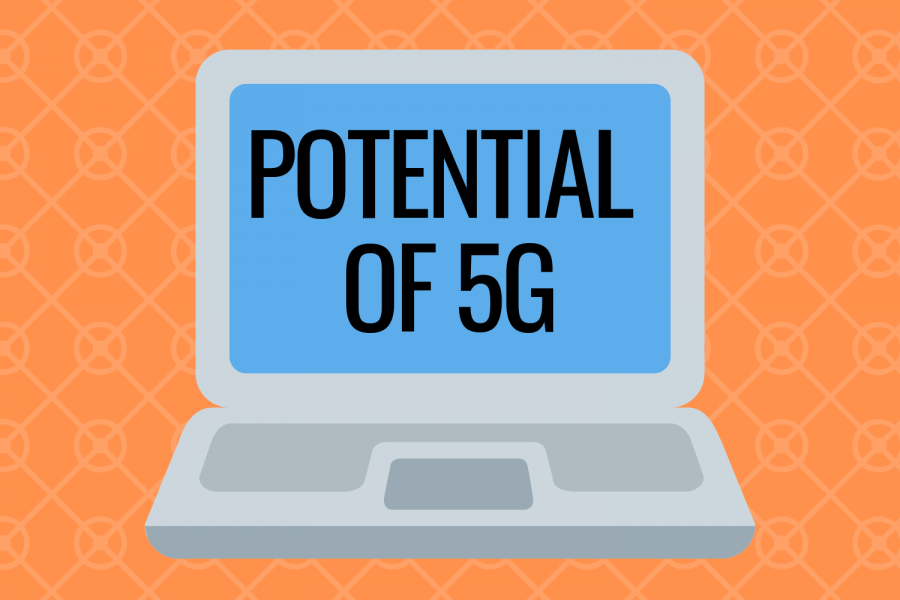Harder, better, faster, stronger
New 5G wireless connection generation promising to all areas of life, society
February 25, 2019
A new arms race has begun. However, it is not really an arms race, but rather it is the race for the next generation of Internet connectivity, and the country to obtain it first may be the world’s next superpower.
Chinese telecommunications company Huawei is racing against American companies to release the world’s first 5G network. So far, China is winning as corporations have constructed nearly 350,000 new cell phone towers compared to 30,000 in the U.S., and have spent over $24 billion since 2015 in research and development of 5G networks. Huawei is also scheduled to unveil one of the world’s first major smartphones that is compatible with 5G during the Mobile World Congress at the end of February.
While China is clearly ahead in the game along with other countries such as Qatar, Taiwan, Japan and South Korea, the three major American telecommunication companies—AT&T, Verizon and the one company resulting from the upcoming Sprint-T-Mobile merger—are releasing preliminary 5G networks that are extremely limited in select cities.
5G is unlike previous wireless connectivity generations in its capabilities as it can be anywhere from 10 to 100 times faster than typical cellular connections. This means that long movies or videos can be downloaded in a matter of milliseconds, but more importantly, 5G will open the field of the transmission of real-time data. This will lead to a network of communications between self-driving cars, traffic lights and other road infrastructure, more powerful streaming and broadcasting and an even more apparent virtual reality market since large amounts of data can be processed in a short amount of time.
Additionally, 5G will have low latency which means that the response time it takes after you click a link or hit play on a video can be reduced to as low as a single millisecond. However, current 5G networks require a high frequency which means that the network will have a much shorter range from the cellular towers but allows for a much higher capacity of network traffic. This has created a barrier for many U.S. companies where building new cellular towers and network stations takes time and is expensive.
The “Internet of Things”—which is the term used to encompass all Internet-connected appliances from smartphones to cars to refrigerators—is likely to emerge as a huge market after the release of 5G. However, 5G is likely to take a few years to roll out depending on the strategies of technology and telecommunication companies. Current smartphones on the market do not have the technology to connect to 5G, so if you want full advantage of the benefits of the newest wireless network, you will have to buy a new phone that has adapted 5G.















